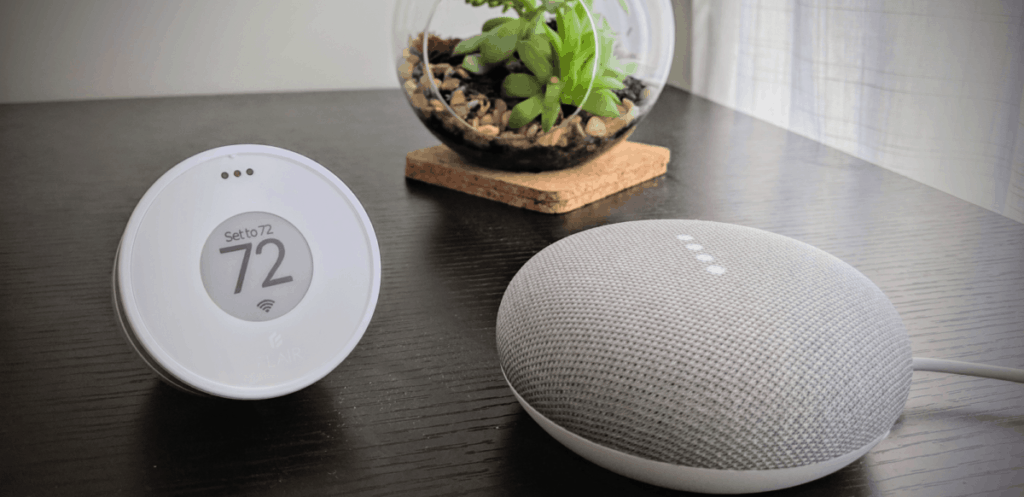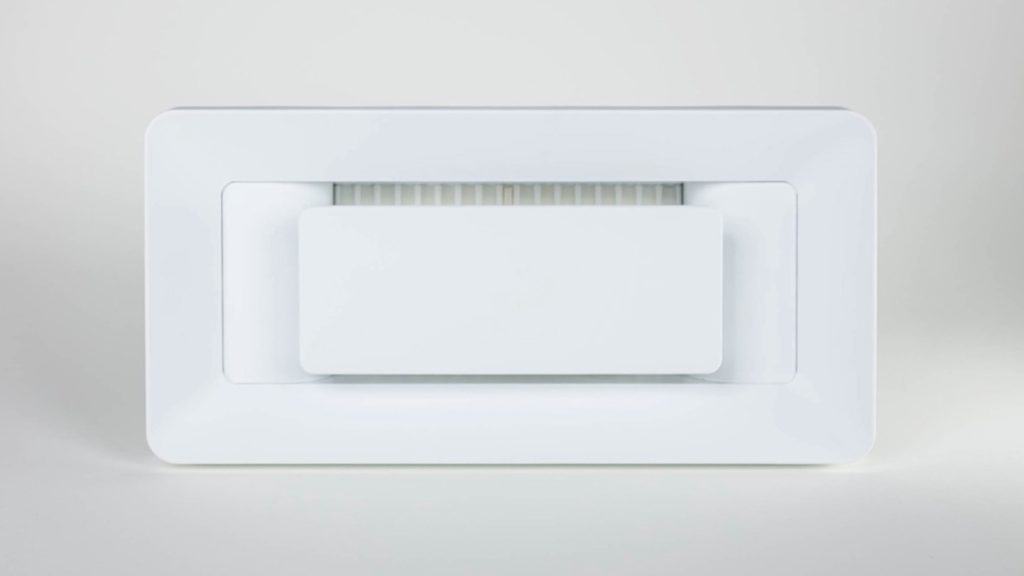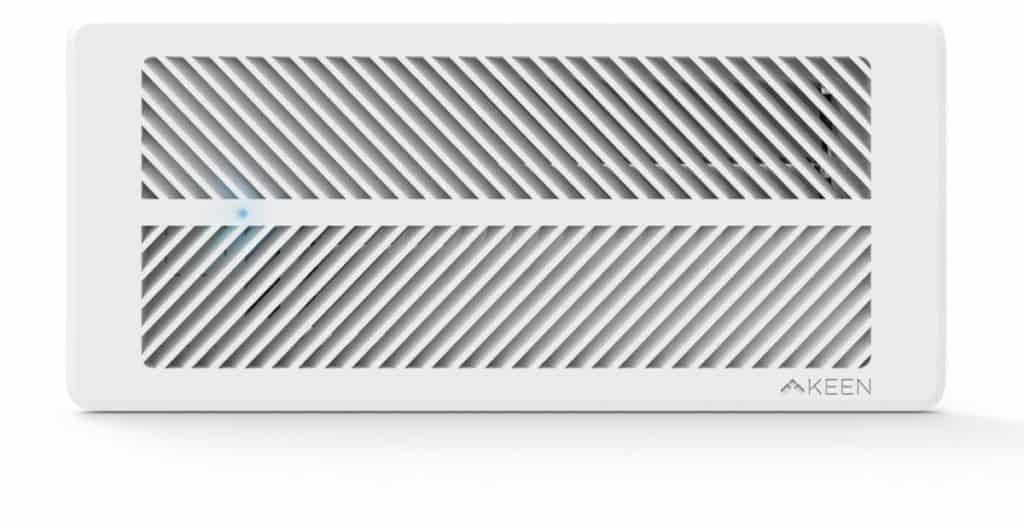
“Are smart vents compatible with Google Home?” would be a pertinent question on the mind of any smart homeowner. Smart vents are systems that offer the possibility of room to room climate control. They include Thermostats and HVAC systems.
The thermostat regulates airflow when the temperature gets too hot or too cold. That allows them to shut the vents when they sense that the room’s temperature has dipped too high or too low.
In other words, in a smart vent system, the thermostat controls the on/off of the HVAC system and the smart vents direct where it goes.
This is beneficial to users by allowing each room to be custom-conditioned depending on the time of day or the preferences of the person in the room.
Before the smart home, this was only possible with expensive zoning systems or decentralized systems such as baseboard heat. Now, several companies are perfecting smart vent systems that will work to increase your comfort and decrease your energy bill which is a fact because heating and cooling require a lot of energy consumption.
Are Smart Vents Compatible With Google Home?
Google Home offers you the chance to take direct control of a broad range of smart home appliances using nothing but your voice and Google Assistant.
Google Home has a network of connectivity stretched to fully 10,000 devices from more than 150 major smart home brands, including the smart vents and that number continues to swell.
has a network of connectivity stretched to fully 10,000 devices from more than 150 major smart home brands, including the smart vents and that number continues to swell.
You get to open and close vents with your voice using the Google Assistant.
The Google Assistant is more than just the virtual aid that lives inside the Google Home family of smart speakers. It is a search engine, a companion, a home controller, and an automated reminder system all rolled into one.
So basically, any smart home automation could be compatible with Google home.
Which Model Is Best, Though?
Automating climate control in your smart home is one of the uses of a smart vent and for most users, a common starting point usually is finding the best smart vent model that is super compatible with Google home. If you are like that, do not worry about it, we got you covered.
I have found four brand companies that have been working on smart vent systems for the home. Ecovent is the most complete system but is the most expensive by far. Then there’s Keen and Flair, both have amazing products and are always in the process of refining their products. Alea, on the other hand, is the newest of the group and is getting ready to storm the market with its first products.
We will discuss these brands in greater detail:
Alea Smart Vent
Alea Labs introduced a new “smart vent” to the marketplace and this smart vent “manages your home’s airflow, moving air to the right rooms at the right time based on your temperature preferences, habits, and floor schedule.”
The company made this system a combination of physical vents and machine learning intelligence that work together to create a more comfortable and safer environment.
Basically, what Alea does to achieve this otherworldly serenity is, it leverages 11 sensors and machine learning algorithms to understand the thermal characteristics of each room in your home, then it optimizes your preferences taking into account everything that affects the air in the room.
The Alea vent can also monitor humidity, air pressure and air quality, notably VOCs. It can communicate with smart thermostats, and its batteries last longer because they use temperature differences for charging.
Alea’s vision is to help transform HVAC from a forceful, supply-driven system into a smart demand-driven one, capable of distributing air only to the rooms that are in need of it, at the time they require it. These sensor-laden vents are a first and fundamental step towards that goal and trust me, there is a lot of interesting technology packed into these vents.
The company is offering the Alea Air starter kit, for an introductory price of $379, which includes three vents. Additional vents can also be ordered for $119each.
Ecovent Smart Vent
Ecovent is a zoning system that uses vents, smart sensors, and smart hub to make sure that each room of your house is at the temperature of your choice, just the way you like it. It works most notably with Sensi Wi-Fi Thermostat, but it can also work well with other Wi-Fi thermostats you desire to use.
Ecovent has a keen similarity to Keen’s smart vents (pun intended), in that you need to install various smart vents in each room of your house along with temperature sensors. These devices would then connect to the smart hub, thereby allowing each device to connect with one another.
Just so you know, all the rooms and their temperatures are displayed on the mobile app, and you can adjust it from there remotely. The smart vents will then make sure to direct more warm air to the rooms you want to be toasty and comfortable, making sure that it is exactly to your taste.
Ecovent products and services upon purchase eight smart vents, five temperature sensors, the control hub, a smart thermostat, and the remote install package.
Note also that Ecovent does not publish individual prices for its devices but you can very well consider paying in 36 monthly installments of $54 each, to get a taste of what Ecovent is offering.
Keen Home Smart Vent
If you know about Keen Home’s smart vent system before now, then it is possible you are aware that you can micromanage the climate in your home by setting a precise temperature for each room where a smart vent is installed. This could come in handy, when one of your rooms gets especially warm in the summer, the Keen Home Smart Vent can easily divert warm air from that room into the colder rooms. Also, Keen Home’s vents are very compatible with a wide array of other home automation gadgets such as smart thermostats and smart locks.
As regards the thermostats, they pair well with the Nest Learning Thermostat and the Ecobee4 and can adjust the temperature based on their remote sensors.
Pros
- Easily replaces existing vents.
- Magnetic front panel for maintenance purposes.
- Long battery life.
- Good 3rd party product support.
Cons
- Frequent connection issues.
- Imprecise scheduling options.
Flair Smart Vent
Personally, I’d recommend Flair as the better of the four for efficiency and cost-effectiveness.
The Flair vents are unique. Unlike their plastic competitors, their vents are constructed with steel. Also, they can be battery-powered or optionally wired for 24VAC power.
One of the necessities of a great smart home product is compatibility, and Flair understands this.
Flair’s product is compatible with Ecobee, Nest, and Honeywell Lyric smart thermostats. It also works with Alexa and Google Assistant, so you can use your voice to check or set the temperature.
Flair is especially compatible with Ecobee. Ecobee’s sensors can be used by Flair
Flair has such great connectivity with other products in case you don’t want to be drawn into the Google ecosystem.
Frequently Asked Questions
Are Any Connections Required?
Smart vents connect relatively easily—at least compared to other devices—and can be controlled with a smartphone or tablet using a smart home bridge or hub, such as the ones offered by Iris or SmartThings.
Do Smart Vents Work With Smart Thermostats?
Yes. Smart vents have the potential to be the perfect complement to a smart thermostat.
A smart thermostat only has the power to turn the heat on or off. It doesn’t have the power to direct where the air goes.
However, a smart vent system can redirect airflow. When a vent is closed in one room, increased pressure in the system causes more air to be redirected to other rooms.
It’s ideal but not necessary to have the two devices be able to communicate with each other.
Could Smart Vents Cause HVAC Failures?
The most asked questions by smart vents users are how exactly they affect the existing HVAC system.
Closing a vent does not really change the behavior of the HVAC’s blower, nor does it affect the temperature of the air coming out of the system, either. So we are of the opinion that smart vents do not cause your HVAC system to fail.
Although, professionals opposed to smart vents argue the opposite, that closing the vents means that they’re not effective at managing home air temperatures, and they could also potentially blow out components and reduce the life of your HVAC system, too.
In other words, they contend that; airflow is imperative to healthy unit performance. Blocking air through closed registers could potentially disable your unit’s fan system, causing the compressor of the HVAC system to fail.
Essentially, that means both your heating and cooling systems would be working harder than they needed to—and that’s not great for your energy efficiency. Longer run time and overtaxed components tend to gobble up more electricity and gas. So much for all the energy you hoped to save!
Do Smart Vents Save Energy?
The whole point of vents being smart is to save energy and money.
and money.
Although some claim that it can’t be done effectively with the smart vent, so far as we know, it is doing quite well.
Final Words
We hope this review on the compatibility of smart vents with Google Home has given you plenty of confidence. Google Home has far more to offer to your other home automation, so go ahead and try it.




